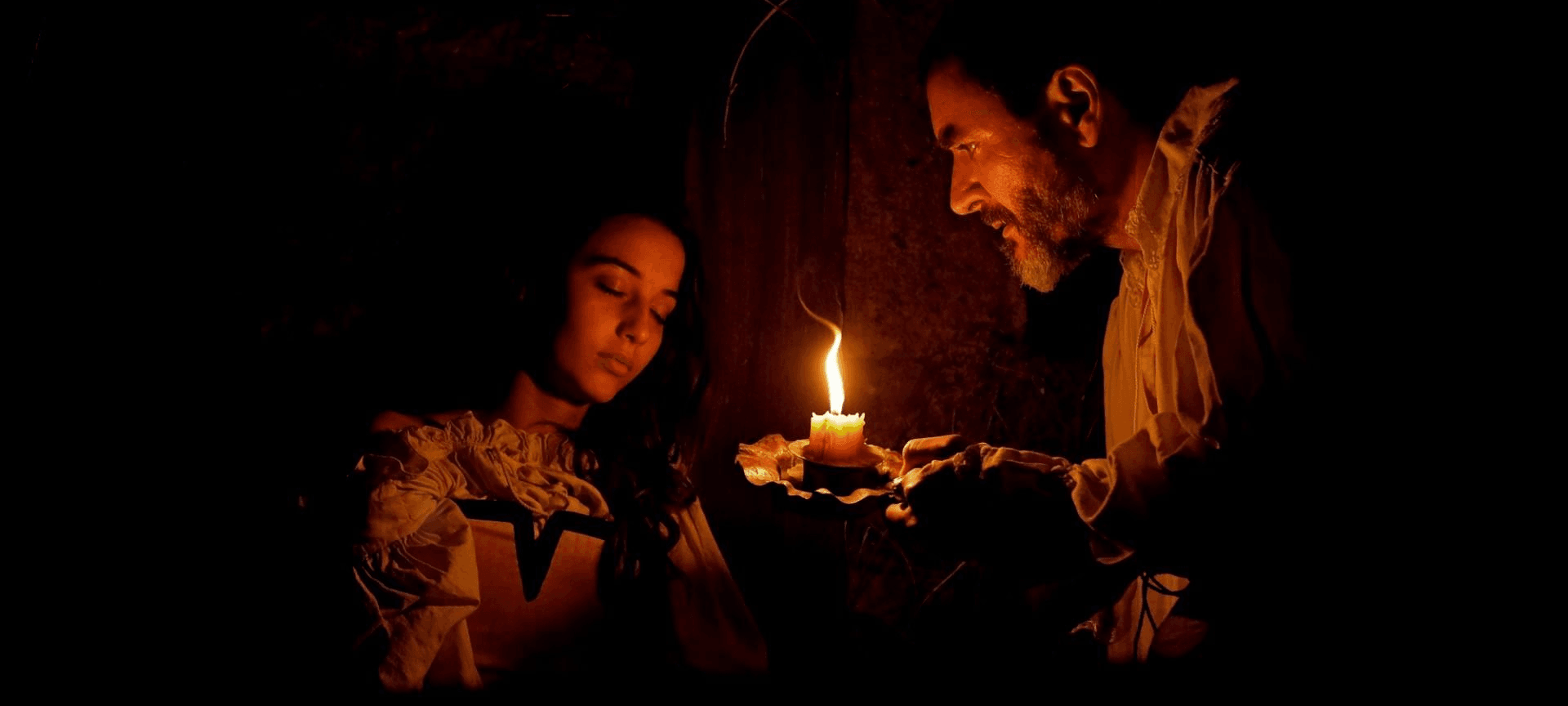
Akelarre
Recent Releases
An agonising and ultimately frustrated tale of resistance in the face of gender and religious-based oppression.
Rosie Stevenson
WARNING - Contains Spoilers
Pablo Aguëro’s ‘Akelarre’ is an Argentinian-Spanish production that featured at the San Sebastián International Film Festival this year. The scene is set: the Basque Country, 1609. We open with a grim frame: a female body burnt at the stake, head lulling to one side, whilst Inquisition cleric cum witch hunter ‘Rostegui’ and his scribe watch on, visibly gagging as the orange flames lick the limp bodies out of focus.
A Basque term meaning the ‘Witches’ Sabbath’, Akelarre follows the story of a group of young girls imprisoned by the Inquisition, who arrive in their small fishing village when all the men have gone to sea. Through a patchwork of flashbacks and torturous interrogations, we come to learn that the group of friends have been accused of witchcraft for having innocently danced and sung in the woods in the moonlight. Their fate seems sealed - they will be burnt at the stake, unless they can string out the Inquisition long enough until after the next full moon, when the tides turn and bring the men home to the remote village. The girls decide to go along with what they’ve been accused of: they will admit to having performed their sabbath and summoning Lucifer, giving as much detail as they can imagine (using wit and sexual wile) to postpone their sentencing. What follows is an agonising and ultimately frustrated tale of resistance in the face of gender and religious-based oppression.
Indeed, the idea of resistance lies at the heart of this film. Resistance against the demonisation of the Basque language and culture, and against an enforced Christianization. Fans of Sciamma’s ‘Portrait of a Lady on Fire’ will gladly recognise the thematization of the female gaze, as well as the starkly elemental contrast of dark fiery nights and windswept cliff tops overlooking stormy blue seas. This juxtaposition can make Akelarre feel jarring at times, as do the few moments of humour peppered among scenes of brutal mutilation. Ultimately, it has the effect of paralleling the polarisation of the confronting cultures: the wild, savage young girls who joke and rib in Basque, met with the imposing and unmoving sternness of the Spanish monarchy’s envoy.
Special mention must also go to the spectral yet choral-like quality of the Basque chant that both haunts the plot and grounds it in the Basque setting, an important feature for Aguëro who spent ten years researching and developing the script before production. Indian filmmaker Ritesh Batra once said, “When you make something so local and specific, you’re being true to a place and time [..] But when you create something so local and pay attention to all the tiny details, you also end up uncovering something very universal.” And this is where my only issue with Akelarre lies – in a setting as closed and dark and culturally specific as this, what we uncover is almost too uncannily and unsubtly relevant to the contemporary moment. At times, as many critics have observed, the feminist quips just seem too on the nose to be fitting with the other 95% of the film.
The first twenty minutes (almost entirely spent in a stable, watching the girls come to terms with their captivity) do somewhat lag, most likely as nerves settle in the comedown from the initial clifftop chase sequence. The real magic of the film, however, is found in the twisted game of seduction that plays out between Rostegui (Álex Brendemühl) and accused ‘bruja’ Ana (Amaia Aberasturi). Brendemühl’s portrayal of Rostegui’s obsessive and sexual fascination with the witches sabbath is almost caricature-like – an obsession that leads to the film’s climax (in all senses of the word) deep in the dark forest, where the young girls ‘recite’ the sabbath for the Inquisitors in a pantomime that somehow feels all too real.
The final scene is, paradoxically, by no means the end to this story. The end to the story for all of those women historically persecuted by this regime was that of the very first frame of the film: singed bodies on wooden stakes, engulfed in flames. Aguëro, however, makes an interesting choice. As the young ‘brujas’ escape from the sabbath through the woods, shackled together with chains and chased by Rostegui and his soldiers, they reach the edge of a cliff, a steep drop to crashing waves below. Turning to face each other, they agree to jump. As the camera spins back to face the torchlit mob, we hear no splashes or cries – only the exclamation of a wide-eyed Rostegui: ‘Vuelan…’. It’s up to the audience to decide, to imagine, whether this might be true. And with this final twist, Aguëro makes himself clear: against this kind of oppression, the only defence is imagination.